Lentil Flour Bread
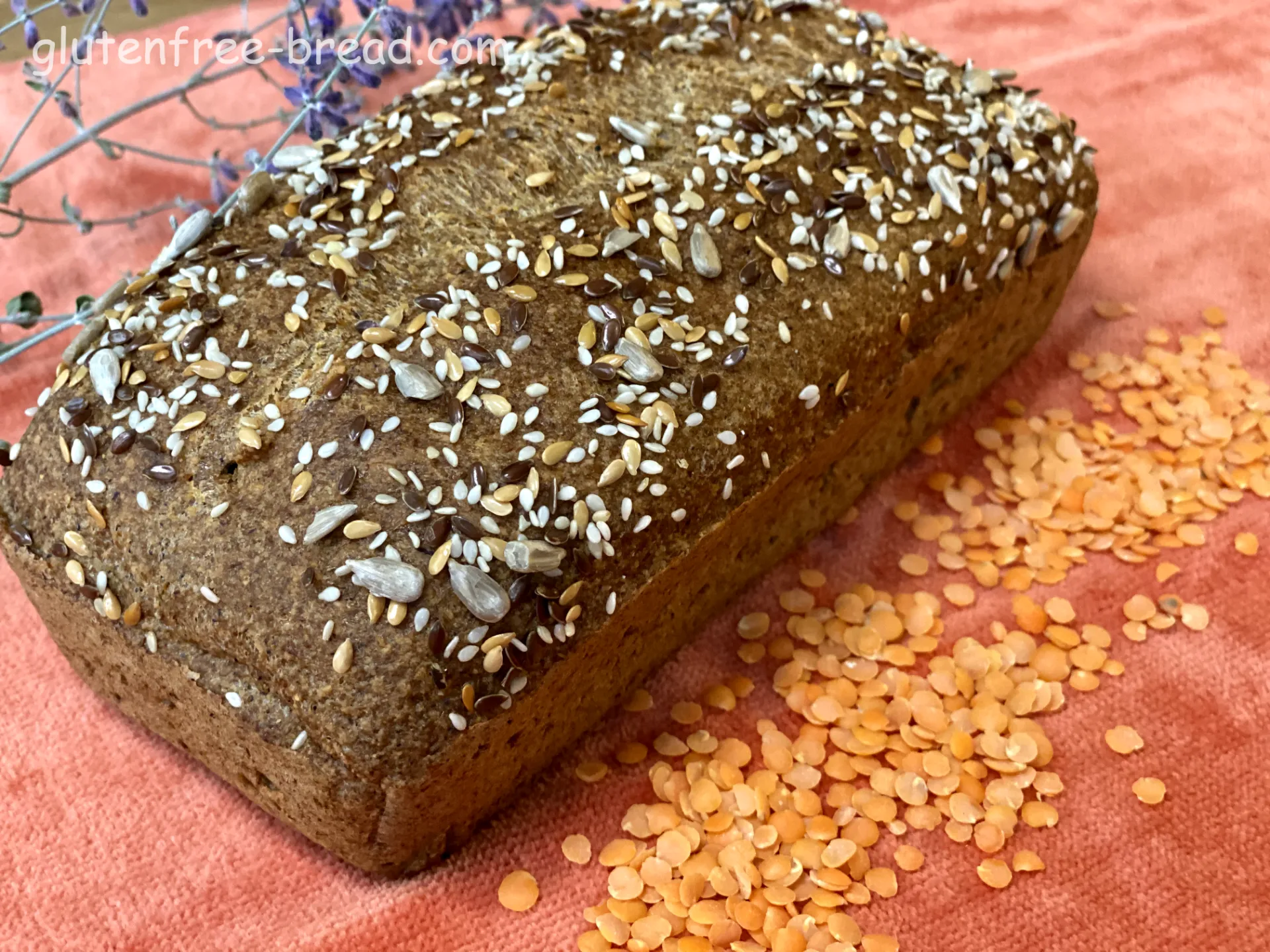
Ingredients:
| Name | Metric | US | TIP | |
|---|---|---|---|---|
| Lentil Flour | 160 gr | 1 cup | ||
| Whole Psyllium Husk | 40 gr | 1/2 cup | ||
| Water | 240 ml | 1 cup | ||
| Eggs | 2 | 2 | ||
| Olive Oil | 15 ml | 1 tbsp | ||
| Baking Soda | 6 gr | 1 tsp | ||
| Salt | 6 gr | 1 tsp | ||
| Apple Cider Vinegar / Lemon Juice | 15 ml | 1 tbsp |
Optional Ingredients :
| 30 gr / 2 tbsp Seed Mix (Sunflower Seeds, Pumpkin Seeds) for topping | |
| 3 gr / 1/2 tsp Garlic Powder | |
| 3 gr / 1/2 tsp Oregano |
Equipment:
| Blender | |
| Loaf pan 8.5in x 4.5in / 21.5cm x 11.5cm |
Steps:
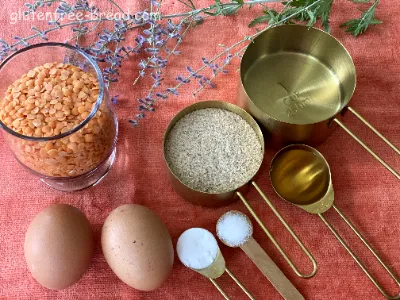
Step 1
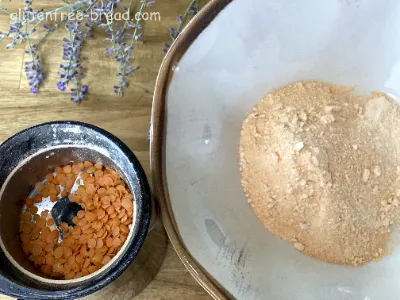
Step 2
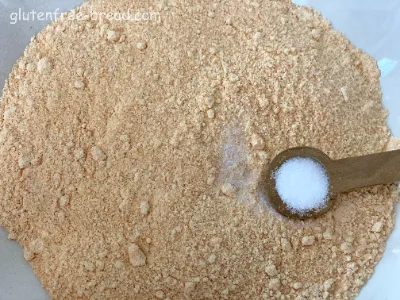
Step 3
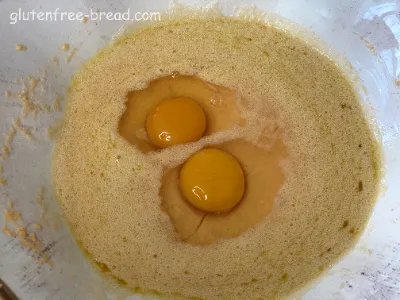
Step 4
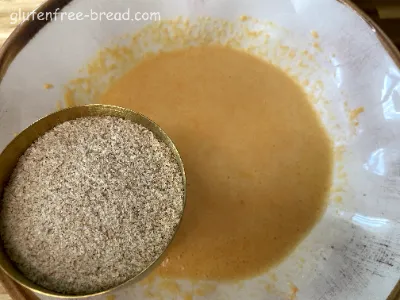
Step 5

Step 6
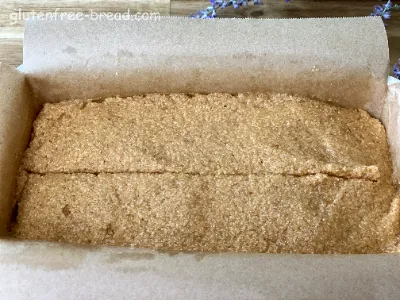
Step 7
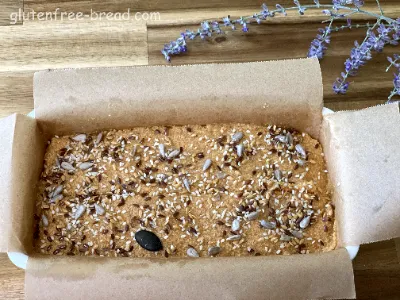
Step 8
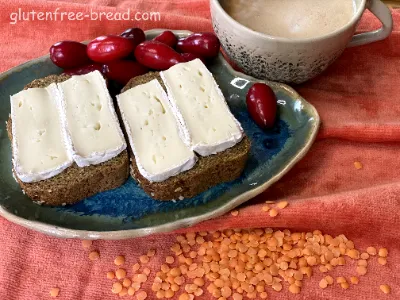
Step 9
Notes:

Lentil Flour Bread
Here are some tips for baking Lentil Flour Bread to ensure the best results:
Tips for Baking Lentil Flour Bread
Use Fresh Ingredients: Ensure your lentil flour and psyllium husk are fresh for optimal flavor and texture. Stale ingredients can affect the bread’s rise and taste.
Measure Accurately: Use a kitchen scale to measure lentil flour and psyllium husk for accuracy. This helps maintain the correct proportions and consistency in your dough.
Blend Lentils Well: If grinding your own lentils, ensure they are ground to a fine powder. Coarser flour can result in a gritty texture in the final bread.
Mix Thoroughly: Combine the dry and wet ingredients thoroughly to ensure an even distribution of the psyllium husk and leavening agents.
Rest the Dough: Allow the dough to sit for the full 15 minutes after mixing. This helps the psyllium husk absorb moisture and expand, resulting in better texture and structure.
Add Baking Soda and Vinegar Last: Mix the baking soda and vinegar into the dough just before baking. This ensures the leavening agents are active and provides a good rise.
Grease the Pan: Grease your loaf pan well to prevent the bread from sticking. You can also line it with parchment paper for easier removal.
Smooth the Top: Smooth the top of the dough in the pan to ensure an even rise and to create a more uniform crust.
Check Doneness: Start checking the bread 5 minutes before the end of the suggested baking time. Insert a toothpick or skewer into the center; it should come out clean if the bread is done. The crust should be golden-brown.
Cool Properly: Allow the bread to cool in the pan for about 10 minutes before transferring it to a wire rack. This helps it set and prevents it from becoming soggy.
Store Correctly: Once completely cool, store the bread in an airtight container to keep it fresh. For longer storage, you can freeze slices and toast them as needed.
Experiment with Add-ins: Feel free to experiment with herbs, spices, or seeds to add extra flavor and texture to your bread.
By following these tips, you’ll be able to bake a delicious, well-textured lentil flour bread that’s both nutritious and satisfying.
Lentil Flour Bread additional information:
The nutritional value of bread made with lentils and psyllium husk can be quite beneficial, as both ingredients contribute unique nutritional profiles:
Lentils:
- Protein: Lentils are a good source of plant-based protein, which is essential for muscle repair and overall body function.
- Fiber: Lentils are high in dietary fiber, both soluble and insoluble, which aids in digestion, helps regulate blood sugar levels, and promotes satiety.
- Vitamins and Minerals: Lentils are rich in several vitamins and minerals, including folate, iron, phosphorus, potassium, and manganese.
Psyllium Husk:
- Soluble Fiber: Psyllium husk is extremely rich in soluble fiber, which absorbs water and forms a gel-like substance in the digestive tract. This helps regulate bowel movements, promotes a feeling of fullness, and can aid in lowering cholesterol levels.
- Low in Calories: Psyllium husk is low in calories but high in fiber, making it a beneficial addition to a variety of diets.
- Prebiotic Properties: Psyllium husk can act as a prebiotic, promoting the growth of beneficial bacteria in the gut.
Together, these ingredients in bread form provide a nutritious option:
- Protein: Lentils provide a good amount of protein, essential for muscle growth and repair.
- Fiber: Both lentils and psyllium husk contribute to a high fiber content, which supports digestive health, regulates blood sugar, and promotes satiety.
- Vitamins and Minerals: Lentils add essential vitamins and minerals to the bread, enhancing its overall nutritional profile.
- Low Glycemic Index: The combination of lentils and psyllium husk can contribute to a lower glycemic index of the bread, potentially beneficial for managing blood sugar levels.
Overall, bread made with lentils and psyllium husk can be a nutritious choice, providing protein, fiber, vitamins, and minerals essential for overall health and well-being.
When choosing psyllium husk for baking bread, here are some tips to consider:
Whole Psyllium Husk vs. Psyllium Husk Powder:
- Whole Psyllium Husk: This form consists of intact husks and adds texture and structure to baked goods. It absorbs moisture and helps bind ingredients together. It's ideal if you want to see some texture in your final product.
- Psyllium Husk Powder: This is ground into a finer powder, which disperses more evenly throughout the dough. It still provides binding properties but might result in a smoother texture in the baked bread.
Purity and Quality:
- Look for psyllium husk that is pure and free from additives or fillers. It should be labeled as 100% psyllium husk without additional ingredients.
Color and Freshness:
- Psyllium husk should be light beige to light brown in color. Avoid husk that appears grayish or has a dull color, as this may indicate it's old or lower quality.
Packaging and Storage:
- Choose psyllium husk that is stored in airtight packaging to maintain freshness. Store it in a cool, dry place away from direct sunlight.
Organic vs. Conventional:
- Organic psyllium husk is produced without synthetic pesticides or fertilizers, which some people prefer for health and environmental reasons. It may also have a cleaner taste.
Read Reviews and Recommendations:
- When in doubt, read reviews from other bakers or look for recommendations from reputable sources. This can help you choose a brand or type of psyllium husk that consistently performs well in baking.
By considering these factors, you can choose the right psyllium husk for your bread baking needs, ensuring a successful and delicious result.
Psyllium husk can change the color of your bread, especially if you're using a significant amount of it in the recipe. Here are a few reasons why this might happen:
Natural Color: Psyllium husk is typically light brown to beige in color. When added to dough or batter, especially in larger quantities, it can impart a slightly darker hue to the final baked product.
Reaction with Ingredients: Psyllium husk can react with other ingredients in the bread dough, such as water and acids (if present), which might alter its color during baking. This reaction is usually minor but noticeable.
Concentration: The concentration of psyllium husk used in the recipe can affect how much it affects the color. Higher concentrations or larger amounts can lead to a more pronounced color change.
Browning Effect: During baking, psyllium husk can contribute to the browning process of the bread crust due to its ability to absorb moisture and enhance the Maillard reaction, which gives bread its characteristic brown color.
If you notice a change in color in your bread when using psyllium husk, it's generally nothing to worry about. It's a natural phenomenon and doesn't typically affect the taste or texture negatively. In fact, psyllium husk is valued for its binding properties and nutritional benefits, making it a popular ingredient in gluten-free and low-carb baking.







